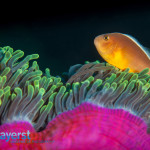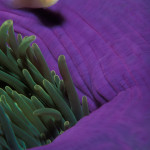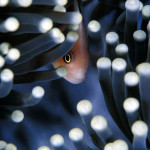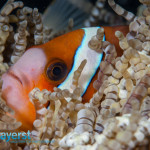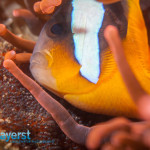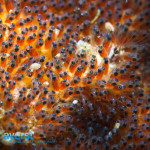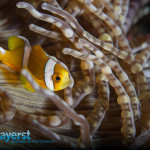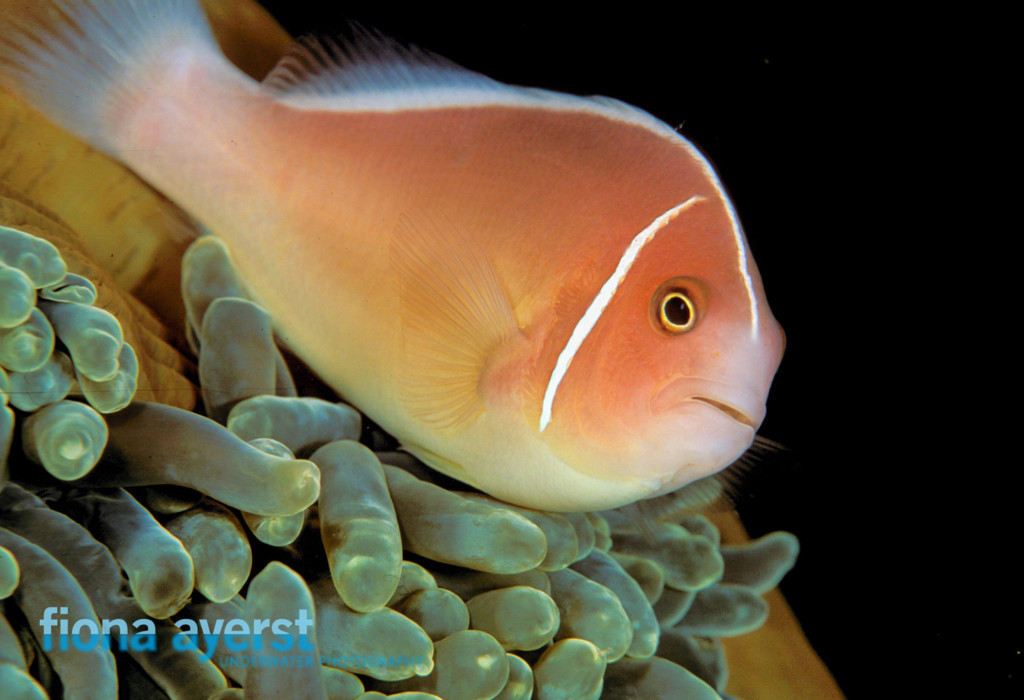
A good solid shot of a clownfish is always a winner and the 60mm lens works well to get it.
The distinctive clownfish, or more generally, anemonefish, is not only beautiful and bright but also unique — it’s the only fish that’s adapted evolutionarily to live among, and protected by, the stinging arms of anemones. These beautiful plants can move about the reef but usually attach themselves to a piece of rock or the coral substrate. When other fish swim close enough, the anemone will shoot out a long, poisonous thread full of toxins and stinging cells to stun and paralyze the fish, which it then draws into its body and eats. Anemonefish survive the deadly sting by gently touching every part of their body to the host’s tentacles until the poison no longer affects them. A layer of mucus then forms on the anemonefish’s body to prevent it from getting stung in the future.
The relationship between the anemone and its resident anemonefish is mutualistic, in that each partner benefits in a unique way. The stinging tentacles protect the fish from predators, and it also eats the leftovers from its anemone’s meals. The anemone, in turn, benefits because the anemonefish helps the anemone catch its prey by luring in other fish. The anemonefish also eats any dead tentacles, keeping the anemone in tip-top shape.
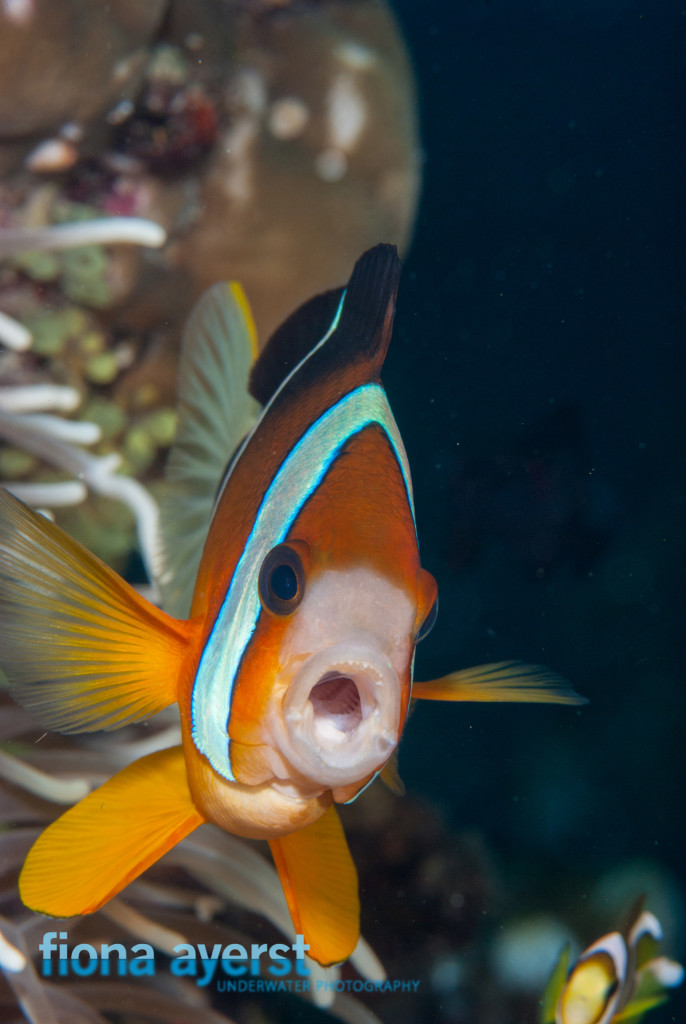
Clownfish can be aggressive and protective over their egg and host anemone.
It can be difficult to capture anemonefish in a photo as they tend to get excited when you approach, darting all over the place and even coming out of the anemone to defend it from your advance. They can become pretty aggressive, especially when they have eggs, which they lay in clumps under the skirt of the anemone to protect them from predators. Keep an eye out for these tiny, golden beads when you’re shooting, and watch to see if you can capture a clownfish “aerating†their eggs by blowing on them. The eggs make great photos if you have a lens with a good focal length, and especially if you work with diopters for close focus. The eggs hatch within seven to 10 days, so if you can visit the same dive site over a week, you can watch the baby fish develop in their egg cases.
How to Shoot Anemonefish
To begin, I think it’s easiest to use the 60mm macro lens on a cropped frame DSLR. If you have a compact camera, then you can achieve the same aspect with the native lens, but you may have issues with shutter lag, as these little guys move fast. If you use a full-frame DSLR camera, then the 100 or 105mm lens will give the best results.
I have tried to shoot anemonefish in ambient light, but generally they move too fast and it’s best to freeze them with strobe light. I recommend two strobes pulled in close to your port but facing slightly outwards so that the sweet spot of the light beams hits the anemone in just the right place.
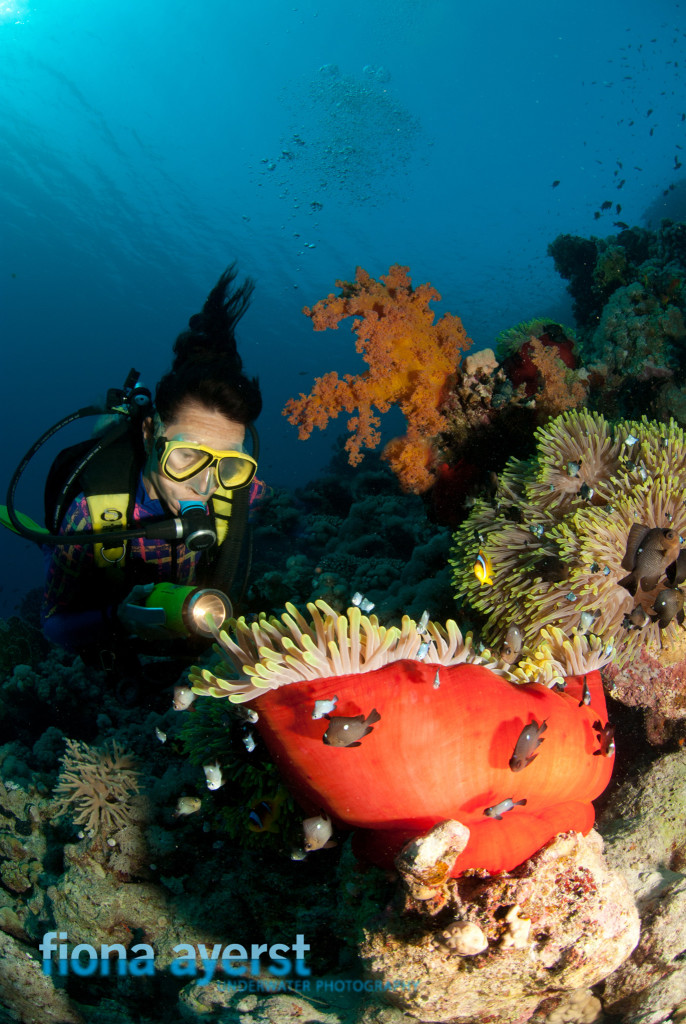
Anemone skirts have incredible vibrancy.
First, stop down (increase the f-stop number) as much as you dare. I generally teach my students to start at about f/22 if they are using a DSLR. If you have a compact camera then you may only manage to get to f/8, but that’s fine too. A closed aperture will give you the best depth of field, and that way you get the most area possible in focus. This is especially important if you’re using the longer focal length of the 100mm lens. The 60mm is a little more forgiving, so start off with that lens if you have one.
To get a nice, rich color, try to keep your ISO as low as it can go — do not leave it on auto. You should be able to do this easily if you’re using two strobes. I recommend that you keep your shutter speed at around 1/60s but you will have to review your photos to ensure you are getting good light. If you have to change anything to get more light, then try your shutter speed a bit slower at 1/125s or even 1/80s.
I also suggest that you use a histogram to review the light on your photos, as it’s often hard to review an underwater photo correctly since you’re shooting through so many layers of glass or perspex.
Watch the Subject
The anemonefish will move in and out of focus depending on how far it is away from the lens, but your key focus point should be the eye. Putting the single focus on “spot†and keeping that spot on the fish’s eye is the best advice for capturing that critical focus point. In the beginning, it’s easiest to watch how and where the fish swims as they tend to use patterns. Once you know, you can line up your lens and wait for the fish to swim into the sweet spot you have lined up. Once you’ve taken a few photos, zoom in on your shots to ensure that they’re sharp, especially around the anemonefish’s eye. You can’t tell if your shots are sharp if you just look at them on the screen in the zoomed-out picture the camera gives you as a review default.
As you’re watching your anemone, be aware of the surrounding environment as well to ensure that you don’t lean against or squash anything. You must achieve perfect neutral buoyancy before attempt an anemone shot, as there is usually too much other marine life living nearby that you could damage. Even those with perfect buoyancy should always keep an eye on how close they are to the anemone so as to avoid bumping into it and damaging it, as it is soft and easily hurt. Sometimes it’s difficult to tell, when you’re staring into a viewfinder, just how close to an object your port is, especially when using a macro port.
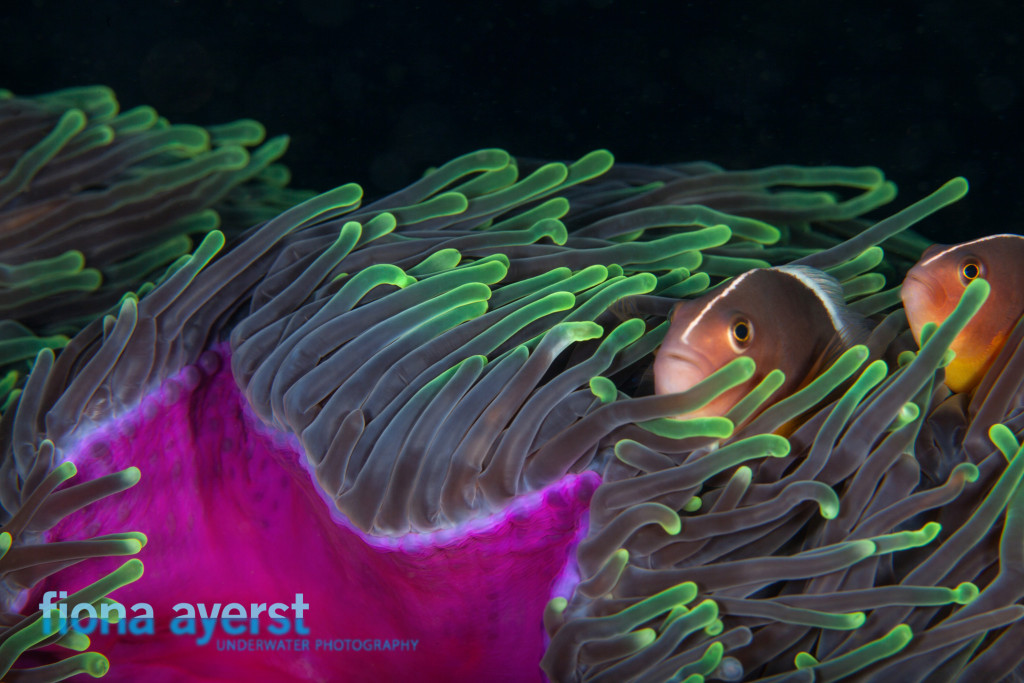
Once you can shoot one clownfish successfully, you can pit your skills against two.
Getting Creative
Once you’ve taken some solid, in-focus macro shots of an anemonefish, you can try something more creative like moving your strobes sideways and facing inward to light up both sides of the anemone. Positioning your lights on the sides can cause translucent animals to glow from the light passing through them.
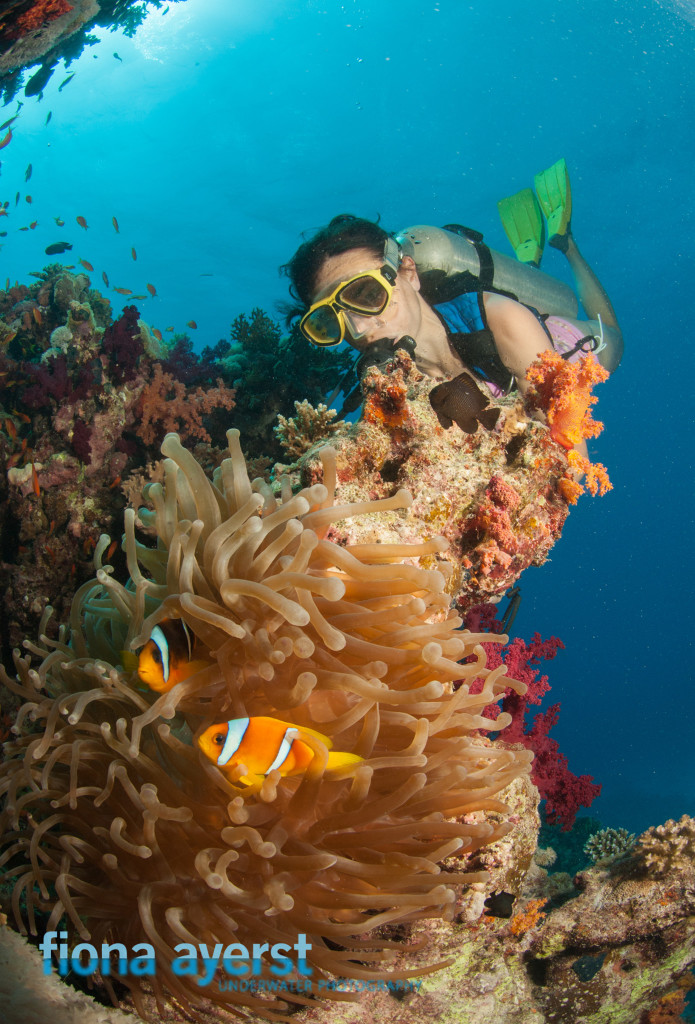
Once you have the macro shots in the bag you can move on to more advanced techniques such as close up wide angle shots.
And once you’ve mastered the macro shots, you can also have a lot of fun trying the “close-up/wide-angle†technique, where you get in close to the fish, but also have some reef and a diver in the background. These shots take a bit more planning, though, so that’s information for another article.
The post Underwater Photography: How to Shoot Anemonefish appeared first on Scuba Diver Life.
